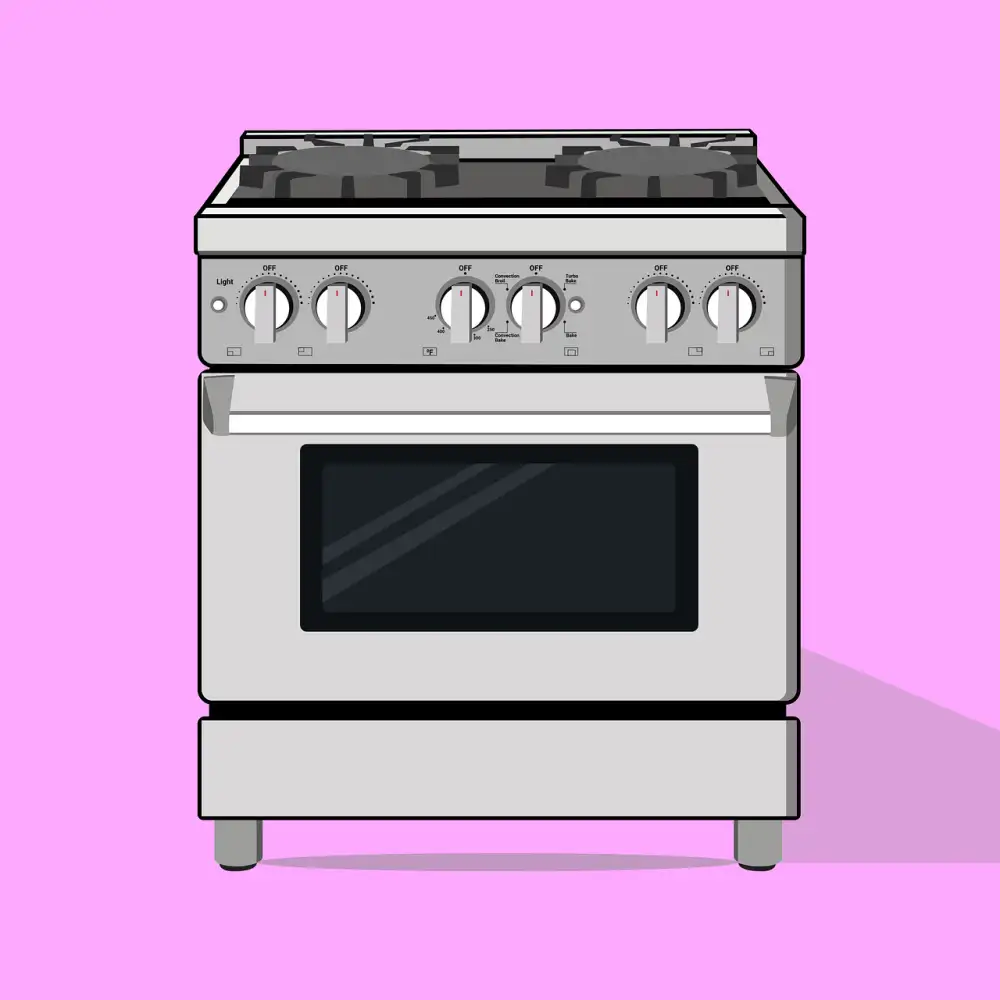Master the Art of Cooking with a Convection Oven: A Step-by-Step Guide for Home Chefs

Convection ovens have become increasingly popular among home chefs, thanks to their ability to cook food faster and more evenly. Unlike traditional ovens that rely on radiant heat, convection ovens use a fan to circulate hot air throughout the cooking chamber. This constant circulation of hot air ensures that food is cooked uniformly, resulting in perfectly golden crusts and succulent interiors. Whether you're a novice or an experienced cook, mastering the art of cooking with a convection oven can take your culinary skills to new heights. In this guide, we will walk you through the basics of convection cooking and provide valuable tips for using this versatile appliance effectively. Get ready to elevate your cooking game with the power of convection!
Understanding the Basics of Convection Cooking
Convection cooking is a popular method that utilizes the circulation of hot air to cook food more efficiently and evenly. Unlike traditional ovens, which rely on radiant heat, convection ovens have a fan that helps distribute the heat throughout the oven cavity.
The circulating hot air in a convection oven speeds up the cooking process by transferring heat to the food more quickly. This means that you can cook your meals faster than with a conventional oven. Additionally, because the hot air is constantly moving, it eliminates any hot spots or cold areas in the oven, resulting in more even cooking.
Convection cooking is especially beneficial when it comes to baking. The even distribution of heat ensures that your pastries and breads rise evenly and have a golden brown crust. It also helps to reduce cooking times for items like cookies and cakes.
When using a convection oven, it's important to note that recipes may need to be adjusted. The circulating air can cause food to cook faster than expected, so you may need to reduce both the temperature and cooking time specified in your recipe. It's always best to keep an eye on your food and use a thermometer to ensure it reaches the desired internal temperature.
Overall, understanding how convection cooking works will help you make the most out of your convection oven. Whether you're baking or roasting, this method will elevate your culinary skills and produce delicious results every time.
Preheating the Convection Oven
Before you start cooking with a convection oven, it's important to preheat it properly. Preheating allows the oven to reach the desired temperature and ensures even cooking throughout. To preheat your convection oven, simply set the desired temperature and allow it to heat up for about 10-15 minutes.
Unlike traditional ovens, convection ovens have a fan that circulates hot air, which means they heat up faster. This is why preheating time is shorter compared to conventional ovens. However, it's still crucial to give your convection oven enough time to reach the desired temperature before placing your food inside.
To check if your convection oven is properly preheated, you can use an oven thermometer or rely on the built-in temperature display. Once the oven has reached the desired temperature, you're ready to start cooking with confidence, knowing that your food will be cooked evenly and efficiently.
Adjusting Cooking Times and Temperatures
When using a convection oven, it's important to understand that cooking times and temperatures may need to be adjusted compared to traditional ovens. The circulating hot air in a convection oven cooks food faster and more evenly, so you'll often find that recipes require shorter cooking times.
To adjust the cooking time, start by reducing the recommended time by about 25%. For example, if a recipe suggests baking for 30 minutes in a conventional oven, try baking it for around 22-23 minutes in a convection oven. Keep an eye on your dish as it cooks and use a timer to ensure you don't overcook it.
In terms of temperature, you can generally lower the heat by about 25 degrees Fahrenheit (or 15 degrees Celsius) when using a convection oven. This is because the hot air circulation speeds up the cooking process. However, if you're unsure or working with delicate foods like pastries or soufflés, it's best to stick to the original temperature suggested in the recipe.
Remember that every convection oven is different, so it may take some trial and error to find the perfect adjustments for your specific model. It's always a good idea to keep notes on your cooking experiments to refer back to later.
By adjusting cooking times and temperatures accordingly, you'll be able to fully harness the power of your convection oven and achieve delicious results every time.
Using the Convection Setting for Baking
One of the great advantages of a convection oven is its ability to evenly bake your favorite treats. When using the convection setting for baking, there are a few key points to keep in mind.
Firstly, it's important to adjust the recipe temperature and cooking time. Since convection ovens circulate hot air, they tend to cook food faster than traditional ovens. As a general rule, reduce the temperature by about 25 degrees Fahrenheit and decrease the cooking time by around 25%.
Next, be sure to use shallow pans or baking sheets with low sides. This allows for better air circulation and ensures even browning. Avoid using deep dishes that may block the airflow.
Another tip is to rotate your baked goods halfway through cooking. This helps to ensure that they cook evenly on all sides and prevents any potential hot spots in the oven.
Lastly, keep an eye on your baked goods as they cook. Due to the faster cooking time, it's easy for them to become overdone if left unattended. Use a timer and check for doneness a few minutes before the recommended cooking time.
By following these tips, you can achieve perfectly baked goods every time with your convection oven. Whether it's cookies, cakes, or pastries, this setting will elevate your baking skills and impress your family and friends with delicious treats.
Roasting and Broiling with a Convection Oven
Roasting and broiling are two popular cooking methods that can be enhanced with the use of a convection oven. When roasting meats or vegetables, the convection setting helps to evenly distribute heat, resulting in a crispy exterior and moist interior. To achieve optimal results, it is important to preheat the oven and use a roasting rack to allow air circulation around the food.
When broiling with a convection oven, the fan helps to quickly cook the food while also giving it a nice browned finish. It is recommended to adjust the cooking time and temperature when using the convection setting for broiling. Keep a close eye on the food as it can cook faster than in a traditional oven.
To roast or broil with a convection oven, follow these steps:
1. Preheat the oven to the desired temperature.
2. Place the food on a roasting rack or broiler pan.
3. Set the oven to the convection setting.
4. Adjust the cooking time and temperature according to your recipe or preference.
5. Monitor the food closely as it cooks, making sure not to overcook or burn it.
By utilizing these techniques, you can achieve perfectly roasted meats and vegetables with a golden-brown crust and succulent interior. Experiment with different recipes and ingredients to truly master roasting and broiling with your convection oven.
Tips for Properly Using a Convection Oven
1. Use the right cookware: Opt for shallow, light-colored pans that allow hot air to circulate evenly. Avoid using dark, heavy pans that can absorb heat and hinder the convection process.
2. Adjust cooking times: Since convection ovens cook food faster, reduce cooking times by about 25%. Keep a close eye on your dishes to prevent overcooking.
3. Lower the temperature: Decrease the recommended temperature by 25°F (or about 15°C) when using a convection oven. This helps ensure even cooking without drying out your food.
4. Don't overcrowd the oven: Allow enough space between dishes to allow proper air circulation. Overcrowding can lead to uneven cooking and longer cooking times.
5. Use lower racks for delicate items: When baking or roasting delicate items like cakes or cookies, place them on lower racks to avoid excessive browning or burning due to the intense heat at higher levels.
6. Monitor your food closely: Convection ovens can cook food faster than traditional ovens, so it's important to keep an eye on your dishes and use timers as needed to prevent overcooking or burning.
7. Rotate pans halfway through cooking: To ensure even browning and cooking, rotate your pans halfway through the cooking process. This helps distribute heat evenly and prevents one side from becoming too browned.
8. Keep the oven door closed: Unlike traditional ovens, it's best not to open the oven door frequently while using a convection setting. Opening the door can disrupt airflow and affect cooking times and results.
By following these tips, you'll be able to make the most of your convection oven and elevate your culinary creations with ease and precision.
Cleaning and Maintenance of Convection Ovens
Cleaning and maintaining your convection oven is essential to ensure its longevity and optimal performance. Here are some tips to keep your oven in top shape. After each use, allow the oven to cool down before cleaning. Use a damp cloth or sponge with mild dish soap to wipe down the interior and exterior surfaces. Avoid using abrasive cleaners or scrub brushes that can damage the oven's finish. Remove any spills or food debris from the oven racks and trays. For stubborn stains, create a paste using baking soda and water, apply it to the stain, let it sit for a few minutes, then wipe it away with a damp cloth. Regularly clean the oven's fan and filter to prevent grease buildup and maintain proper airflow. Consult your oven's manual for specific instructions on how to remove and clean these components. Finally, don't forget to regularly check and replace any worn-out seals or gaskets to ensure proper heat retention. By following these cleaning and maintenance practices, you can enjoy delicious meals cooked in a well-maintained convection oven for years to come.
In conclusion, mastering the art of cooking with a convection oven can elevate your culinary skills to new heights. By understanding the basics of convection cooking, preheating the oven properly, and adjusting cooking times and temperatures, you can achieve perfectly cooked dishes every time. Whether you're baking, roasting, or broiling, utilizing the convection setting will ensure even heat distribution and quicker cooking times. Remember to follow our tips for proper usage and maintain regular cleaning and maintenance to keep your convection oven in top shape. With practice and experimentation, you'll soon become a pro at using this versatile appliance. So go ahead, unleash your creativity in the kitchen, and enjoy the delicious results that come from mastering the art of cooking with a convection oven!
Published: 15. 01. 2024
Category: Home



